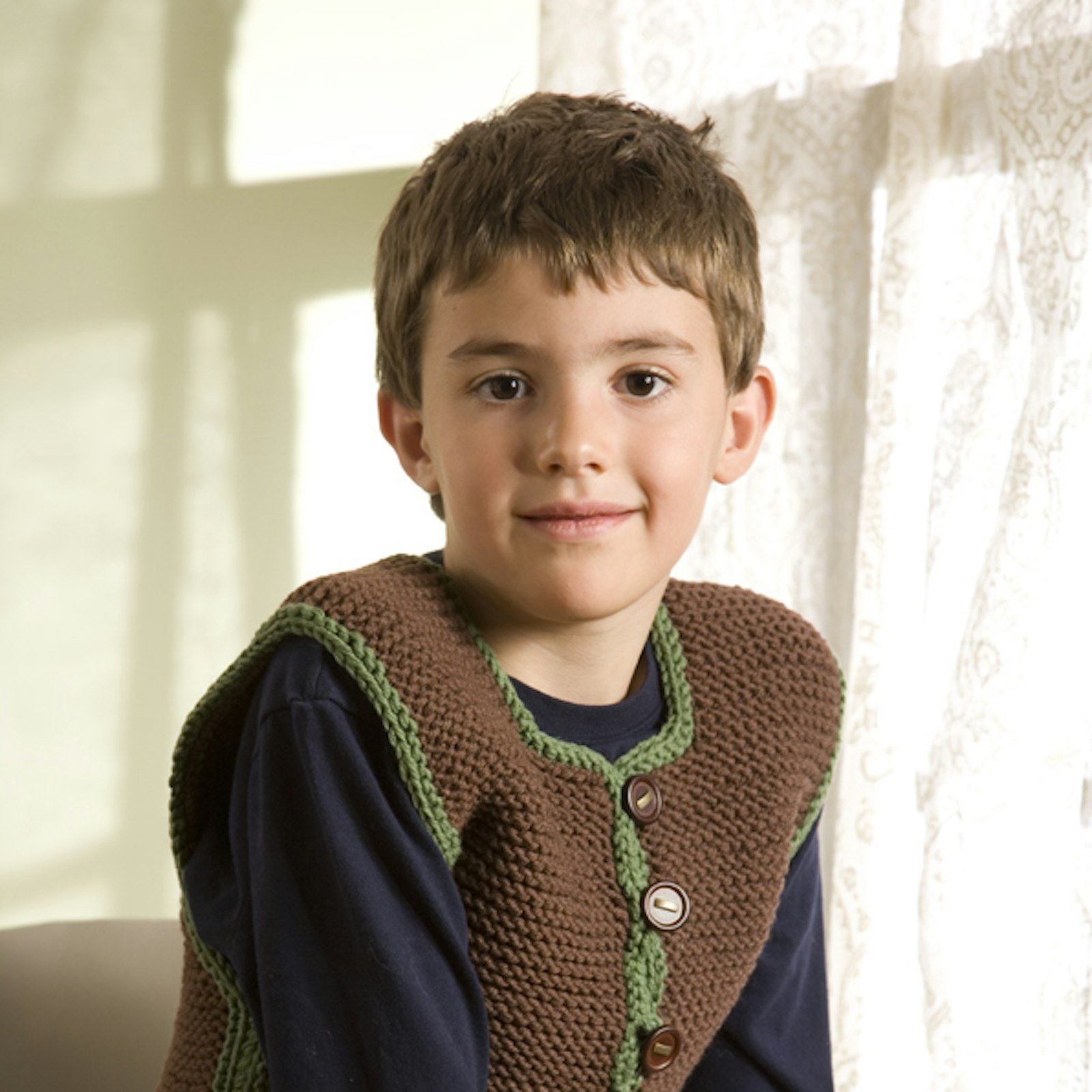Subscriber Exclusive
Knit a Child’s Vest
Looking for a project to knit for a six- to seven-year-old child? Check out our knitted child’s vest from Weldon’s Practical Knitter!
Looking for a project to knit for a six- to seven-year-old child? Check out our knitted child’s vest from Weldon’s Practical Knitter! <a href="https://pieceworkmagazine.com/knit-a-childs-vest/">Continue reading.</a>
https://pieceworkmagazine.com/cdn-cgi/image/format=auto/https://www.datocms-assets.com/75076/1739225948-pw107-0121-res-square.jpg?auto=format&w=900
Ann used tapestry yarn, most often used for needlepoint, to achieve the thick, padded effect on this vest. This is an easy project to personalize: just use the child’s favorite colors and add novelty buttons. PieceWork magazine subscribers can log in and access this bonus subscriber-exclusive PDF instantly.
Only in the Victorian era would someone name a child’s vest a “chest protector.” That is what Weldon’s Practical Needlework, England’s premier how-to books published in the late Victorian era, calls this child’s garment—and it does exactly describe it, but our guess is that calling it a vest will get it worn more often!
Ann modified the instructions from those in Volume 7 of Weldon’s Practical Needlework (Facsimile edition, Loveland, Colorado: Interweave Press, 2002). The yarn, designed as a tapestry yarn for needlepoint, has a wonderful spring, which, when worked in garter stitch, gives a thick, padded fabric. The vest is worked in one piece from the lower back, over the shoulders, and down to the lower front. The edges are trimmed with a few rows of garter stitch.
SUBSCRIBER EXCLUSIVE
Ann used tapestry yarn, most often used for needlepoint, to achieve the thick, padded effect on this vest. This is an easy project to personalize: just use the child’s favorite colors and add novelty buttons. PieceWork magazine subscribers can log in and access this bonus subscriber-exclusive PDF instantly.
Only in the Victorian era would someone name a child’s vest a “chest protector.” That is what Weldon’s Practical Needlework, England’s premier how-to books published in the late Victorian era, calls this child’s garment—and it does exactly describe it, but our guess is that calling it a vest will get it worn more often!
Ann modified the instructions from those in Volume 7 of Weldon’s Practical Needlework (Facsimile edition, Loveland, Colorado: Interweave Press, 2002). The yarn, designed as a tapestry yarn for needlepoint, has a wonderful spring, which, when worked in garter stitch, gives a thick, padded fabric. The vest is worked in one piece from the lower back, over the shoulders, and down to the lower front. The edges are trimmed with a few rows of garter stitch.
[PAYWALL]
Materials
- Brown Sheep Waverly Wool (worsted weight), 100% Persian wool yarn, 164 yards (150 m)/4 oz (113 g) skein, 2 skeins of #1172 brown (MC), and 1 skein of #5003 olive (CC)
- Needles, size 10 1/2 (6.5 mm) 24-inch (61 cm) circular or size needed to obtain gauge
- Tapestry needle
- Buttons, 3¼ inch (1.9 cm), 3
Finished size: 23 1/2 inches (59.7 cm) chest circumference and 14 inches (35.6 cm) long from lower edge to shoulders
Gauge: 14 sts and 32 rows = 4 inches (10.2 cm) in garter stitch
Instructions
Body
With MC, CO 40 sts. Do not join. Working back and forth in rows, work even in garter stitch (k every row) until piece measures 11 inches (27.9 cm) from CO.
Next row: K14, join second ball of yarn and BO center 12 sts for back neck, k to end—14 sts each side. Working each side separately, cont in garter st until piece measures 6 inches (15.2 cm) from BO for back neck. At each neck edge, use the backward-loop method (see Technique in pattern) to CO 6 sts—20 sts each side. Cont even in garter st for 5 1/2 inches (14 cm) more.
Next row (joining row): K across both sets of 20 sts using a single ball of yarn—40 sts. Cont even in garter st until piece measures 5 1/2 inches (14 cm) from joining row and 28 inches (71.1 cm) from CO. Loosely BO all sts.
Neck Edging
With CC, RS facing, and beg at base of right front neck slit, pick up and knit 22 sts along right neck slit, 7 sts across top neck edge, 25 sts along right shoulder, 12 sts across back neck, 25 sts along left shoulder, 7 sts across top neck edge, and 22 sts along left neck slit—120 sts total. K 1 WS
row.
Next RS row: BO 4 sts, * use right needle tip as a crochet hook and ch5 for button loop, BO 7 sts; rep from * once more, then ch5 for last button loop (3 ch-button loops completed), BO all sts to end of row.
Lower Edging
With CC and RS facing, pick up and k40 sts across lower back edge. K 1 WS row. BO all sts. Rep for lower front edge.
Side/Armhole Edging
With CC, RS facing, and beg at lower edge, pick up and k118 sts along one side edge. K 1 WS row. BO all sts. Rep for other side.
Weave in loose ends. With CC threaded on the tapestry needle, use a whipstitch to sew front and back together, beg at lower edge and ending about 5 1/2 inches (14 cm) above the lower edge. Sew the buttons to left front opposite the button loops. Block lightly.
“Knit a Child’s Vest” PDF Download
Download PDF
Ann Budd, formerly a book editor for Interweave Press, is the author of The Knitter’s Handy Book of Patterns and The Knitter’s Handy Book of Sweater Patterns.
Published February 20, 2014; updated February 5, 2021; updated January 8, 2025.

